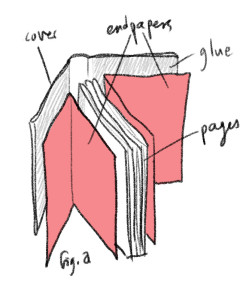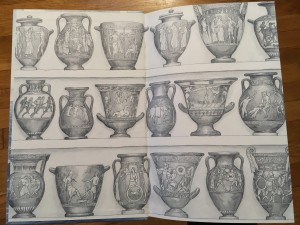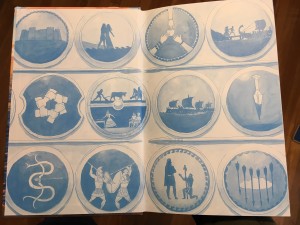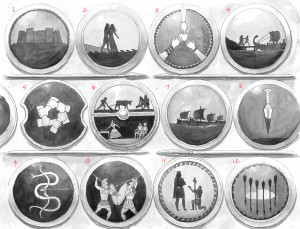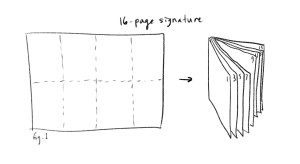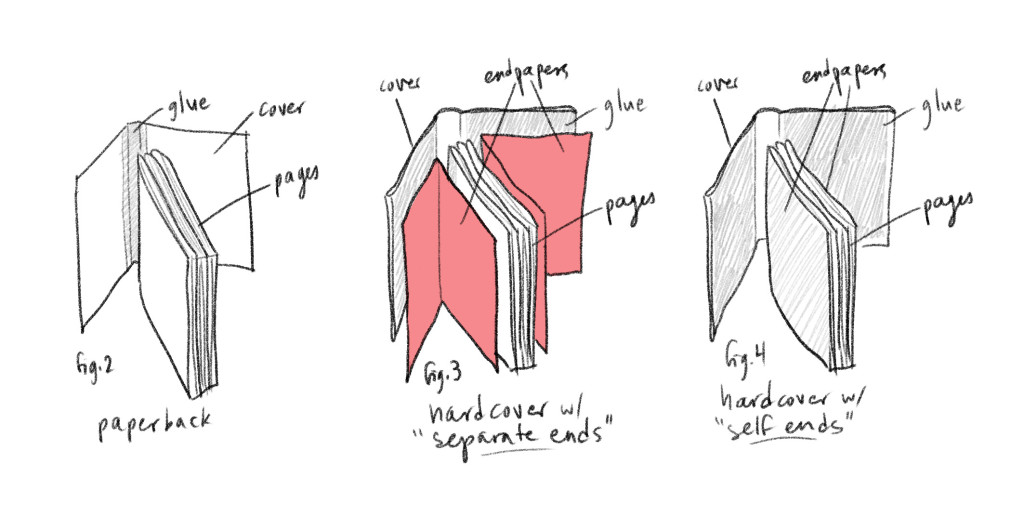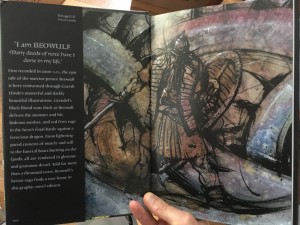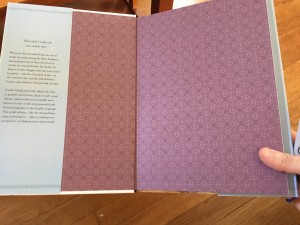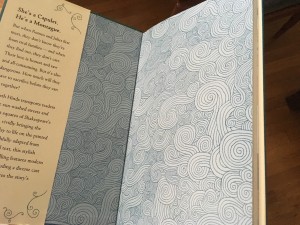Apr 08 2019
All About Endpapers, or What You’ve Been Missing If You’ve Only Seen the Paperback of The Odyssey and The Iliad
A lot of my readers are not aware that the hardcover editions of The Odyssey and The Iliad have art in them that does not appear in the paperback editions.
At the beginning and end of a hardcover book is something called the Endpapers (or simply “ends”). These are usually separate sheets of paper that are used to bind the inside pages to the cover.
Here are the endpapers I created for The Odyssey (click to see larger!)
These are all actual vase paintings from classical Greece. Some of them are explicitly scenes from The Odyssey, others I just found thematically appropriate to allude to the story of Odysseus. In some cases I changed what kind of vessel they are painted on — in real life some are tiny and some are huge, and I wanted them to be more uniform in size.
For The Iliad, I chose a different approach. Here I use shields to tell the story of the lead-up to The Iliad. Again, you will only get these if you get the hardcover; but now at least you can see what you’re missing. In the book they’re printed in blue.
The designs on Greek shields tend to be much less narrative than the vase paintings, so in this case I didn’t use real historical ones. (Quite a few of the shield designs inside the book are real, though not necessarily from the Bronze Age — but these I made up to tell the story, stylizing them in a way I think is reasonably consistent with Greek shield painting.)
They summarize the story of the beginnings of the Trojan War, as follows: (1) the founding of Troy, (2) Thetis and Peleus, (3) the Apple of Discord, (4) the abduction of Helen, (5) invoking the oath of the Achaean Kings, (6) Odysseus and Achilles being tricked into revealing themselves (as, respectively, sane and not a girl), (7) the fleet launching, (8) the sacrifice of Iphegenia at Aulis, (9) the archer Philoctetes bitten by a serpent, (10) the beginning of the war, (11) Chryses’ appeal to Agamemnon, and (12) the plague-arrows sent by Apollo.
Those, by the way, are all cool stories you should look up if you don’t know them 😉
Not all of my books have bonus artwork on the endpapers of the hardcover. If you’re wondering why that is, continue to Part 2, In Which the Author Geeks Out About Bookbinding.
Part 2 – Why some books have endpapers and some don’t
The interior of a book is printed on large sheets which are folded several times and then trimmed, yielding bundles of 16 pages per sheet. These sets of 16 pages are called “signatures.”
– A paperback book usually has the cover glued to the spine/back of the pages. It has no endpapers. [fig. 2 below]
– A hardcover traditionally has endpapers which glue the cover to the pages. These are not part of the first/last signature, but are in effect “extra” pages that a paperback does not have. They are often just a solid color, but they can also be printed like the interior pages. [fig. 3 below]
– What I just described is called a “separate ending” book. A book can instead be “self ending,” which means that the first and last of the interior pages are glued directly to the hardcover. [fig. 4 below]
– For each of my books, the designer and I sit down and figure out (based on the number of pages of art and end notes I want) whether the book should have self or separate ends.
– In cases where the ends are separate, I either created additional art for them, or the designer selected a pattern. Where there are “self” ends, the first page is glued to the cover on the HC but visible on the PB — which is why, for example, Romeo and Juliet has an extra page of swirls at the beginning of the PB. [fig. 5]
So which of my books have which treatment?
Beowulf – self-ending, but with art I created for the separate ends of the self-pub hardcover [fig. 6]
The Merchant of Venice – self ends, map of Venice and fish pattern I created [fig. 7]
King Lear – separate ends, pattern in purple chosen by the Candlewick designer [fig. 8]
The Odyssey – separate ends with art [as discussed]
Romeo and Juliet – self ends, swirl pattern I created [fig. 9]
Macbeth – separate ends, solid blood-red paper [fig. 10]
POE: Stories and Poems – self-ends, pattern of Poe-themed objects I created [fig. 11]
The Iliad – separate ends with art [as discussed]
- fig. 6 – Beowulf
- fig. 7 – Merchant of Venice
- fig. 8 – King Lear
- fig. 9 – Romeo & Juliet
- fig. 10 – Macbeth
- fig. 11 – POE
Thanks for reading! I hope you enjoyed learning more about endpapers, and I hope you enjoy The Iliad — available now from Candlewick Press.
